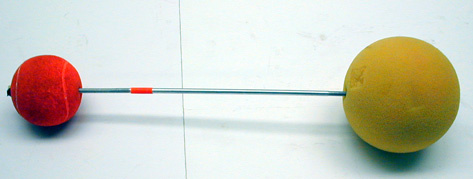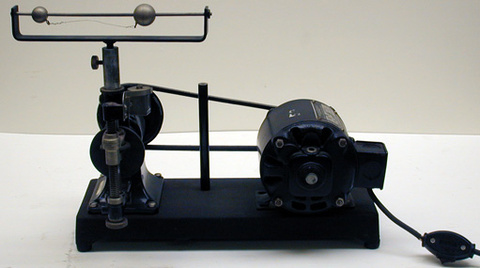Breadcrumb
1D40.35 - Binary System

|

|
Code Number: 1D40.35
Demo Title: Binary System
Condition: Good
Principle: Center of Mass
Area of Study: Mechanics
Equipment:
Binary system with large lightweight ball and small heavy ball, Cenco Rotator Unit with binary apparatus.
Procedure:
You can balance the system on your finger. The balance point is marked by the orange tape on the rod. Throw the system into the air with some rotational motion. You should see the system rotate about it's center of mass ( again the point marked by the orange tape ).
Note: This small binary apparatus is kept in the 1J10.09 "Center of Mass Demos" box. The small binary apparatus is designed to be used with the Cenco Rotator Unit. Secure the apparatus in the chuck of the unit and slowly increase the rotation rate until a center of mass of the system is observed.
References:
- Charles A. Eckroth, "Earth and Moon Motions Around Their Common Center of Mass", TPT, Vol. 28, # 6, p. 425, September 1990.
- Mp-7, 8: Freier and Anderson, A Demonstration Handbook for Physics
- 13 - 14, Janice Vancleave's 201 Awesome, Magical, Bizarre, & Incredible Experiments.
- Deborah Jean Warner, Pike's Illustrated Catalogue of Scientific & Medical Instruments, p. 171, 1984.
- Joseph Frick, "Experiments With the Whirling Machine", Physical Technics; Or, Practical Instructions for Making Experiments in Physics and the Construction of Physical Apparatus with the Most Limmited Means, p. 139.